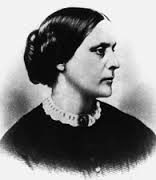Main Facts
She was born on February 15th, 1820. Her Quaker upbringing had a major impact on her. According to Quaker beliefs, both men and women are equal before God. She was a teacher before fighting against slavery and in favor of women’s right to vote. She became the leader of the National American Woman Suffrage Association. She passed away on March 13, 1906.
Period of Youth
Her place of birth was Massachusetts. Her family moved to New York in 1826. She studied at a school near Philadelphia. Following the failure of her father’s business in the late 1830s, she returned home and worked as a teacher. In the mid-1840’s, her family settled in a farm in the Rochester, New York area. The Anthony’s participated in the fight against slavery, also called the abolitionist movement.
Determined Fighter for Women’s Rights
In 1851, she met Elizabeth Cady Stanton, who would become her partner in the fight for women’s rights. She was inspired to claim women’s rights while being involved in the temperance movement for stopping the production and consumption of alcohol. She was prevented from talking at a temperance convention because she was a woman. This made her realize that women should vote to make their opinions count. She and Stanton founded the New York State Woman’s Right Committee. She traveled a lot to promote women’s rights.
Leader in the Women’s Suffrage Movement
In 1866, she helped found the American Equal Rights Association to claim equal rights for all, irrespective of sex or race. In 1868, she and Stanton brought out The Revolution to campaign for women’s rights. In 1869, they continued their pivotal work by establishing the National Woman Suffrage Association. In 1872, Antony violated the law by voting in the presidential election. She received a fine of $100, but never paid it. In the early 1880s, she launched the first volume of History of Woman Suffrage.
Continuous Battle
She continued her battle in her mature years, in which she had largely won the respect of the public. In 1905, she had a meeting with President Theodore Roosevelt to convince him to pass an amendment granting women the right to vote. It was only 14 years after her death that such an amendment was passed: It was the Nineteenth Amendment to the U.S. Constitution. In 1979, she became the first non-fictitious woman who received the honor of being portrayed on dollar coins by the U.S. Treasury Department.


0 Comments